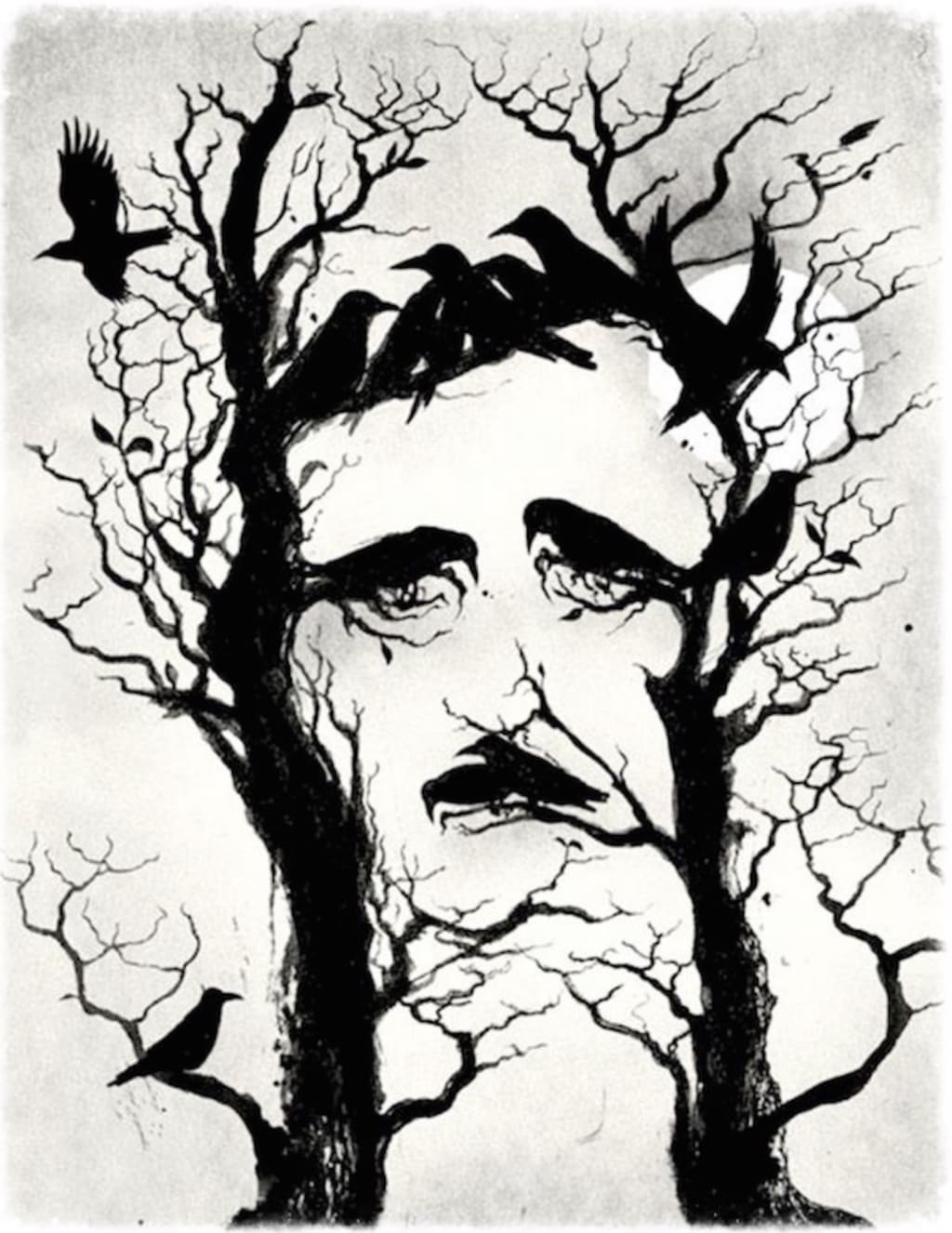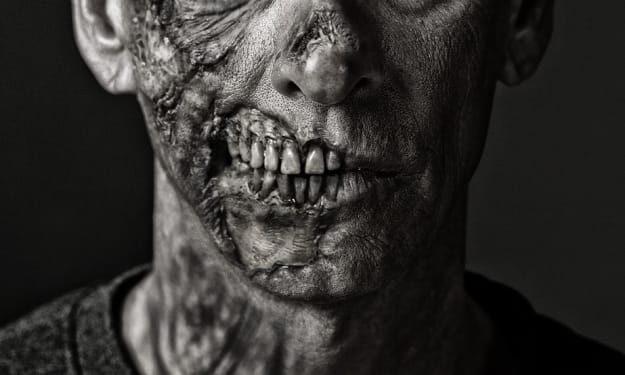
The themes or morals of Edgar Allan Poe’s works still have a presence in our society today and the sense of dread in his writing are imposed onto the reader. This is evident in the correlation between Poe’s "The Fall of the House of Usher" and the modern day horror film House on Haunted Hill. Both have the unerring ability to make the readers and watchers feel they are involved with and being affected by mounting tension.
Webster defines "horror" as a painful and intense fear, dread, or dismay. Poe appears to have mastered his ability to wield these feelings within his writings. He addresses all forms of fears we experience through our lifespan, from the unrealistic bump in the night that keeps us awake as children to the fear of actual events that have or could take place in our day-to-day lives. Some of Poe’s abilities stem from the traumatic events within his upbringing and continued demons of addiction through his life, making him a ferryman through the dark waters of a reader’s imagination.
Proof of his influence is seen in all areas of our culture, based on our most primitive fascination with death and the mystery that accompanies this event. His works have been a force in media throughout the decades since his demise, from plays and other stage performance to film and even cartoons. His listing on the Independent Movie Database online would make even the most popular of writers or directors of our time envious. Poe’s "Fall of the House of Usher" has given rise to many films such as The Haunting (1963), The Terror (1963), and House on Haunted Hill (1959/2008); the last of which we will be discussing today.
Poe’s “Fall of the House of Usher” was originally printed in the Burton’s Gentleman’s Magazine in the September issue, 1839. It highlights the mental decline of Roderick Usher, the male patriarch of the Usher family. The story is presented from the perspective a childhood friend of Usher’s. The story is set by describing the circumstances in which the protagonist finds himself. “I look upon the scene before me — upon the mere house and the simple landscape features of the domain — upon the bleak walls — upon the vacant eye-like windows — upon a few rank sedges — and upon a few white trunks of decayed trees — with an utter depression of soul which I can compare to no earthly sensation more properly than to the after-dream of the reveler upon opium.” This description leads the reader to view this house almost as a corpse with a blank stare and deteriorating exterior that may be holding back a rotting inside at bay.
After entry to the home, the state of his childhood friend also gives him a sense of dread as the man he encounters there holds little semblance to the boy he remembered from his youth. “A cadaverousness of complexion; an eye large, liquid, and luminous beyond comparison… The now ghostly pallor of the skin, and now miraculous luster of the eye above all things startled and even awed me.” Despite these feelings he goes about the task of helping to lift the spirits of Usher, spending time reading, painting, and listening to Usher perform on the guitar.
The narrator only views the sister, Madeline, once before he is told by Usher that she is no more, and yet stands firm by his friend through the process of preparing her for burial. After which, Usher’s behavior becomes more erratic. “He roamed from chamber to chamber with hurried, unequal and objectless step. The pallor of his countenance had assumed, if possible, a more ghastly hue — but the luminousness of his eye had utterly gone out. The once occasional huskiness of his tone was heard no more…” The protagonist then realizes after some days that he is also affected by the symptoms of the maddening behavior he’s noted in his friend. “It was no wonder that his condition terrified — that it infected me. I felt creeping upon me, by slow yet certain degrees, the wild influences of his own fantastic yet impressive superstitions.”
Ultimately, through the story there is no true sign of what causes the fear in Usher until his sister appears, alive despite their previous beliefs, and as a result, Usher dies of utter terror. Until such point, it was the infectiousness of Usher’s mental state and the environment described by Poe that leads to the dread that builds itself to the moment at which Madeline returns, with it stealing a gasp from the reader who is as on edge as the characters.
House on Haunted Hill was originally released in 1959, starring Vincent Price, and re-released in 1999. For the sake of this comparison, I have decided to use the newest release of this film. It has a varied cast of characters, none of whom are familiar to each other or why they have been summoned to this house. There is no particular character from which the perspective of this story plays out. We, as viewers, appear to almost take a voyeuristic stance in this tale.
The house is owned by Stephen H. Price, a billionaire mogul who offers the group a million dollars apiece to stay the night in the haunted house. It is assumed Price is the cause of the spooky situations that arise through the movie. Price plays along for a while until even he is nervous by the turn of events.
The history of the house is revealed as not just an asylum, but a pit of torture and human depravity by the descendent of the building's original owners. This knowledge, in concert with the lockdown mechanism of the old asylum kicking into place, set them all on edge. One by one, they each begin to disappear, with the others all suspecting people in the remaining party until they are faced with an unbelievable truth — a truth they are unknowingly a part of.
Poe’s story, “Fall of the House of Usher,” does carry influence in this modern day horror film, as the details of the surroundings play into the unsettling nature of the story. Even before entering, the characters look upon the structure with awe and unease. The house itself is a character of its own, as it was once an insane asylum: Vannacut Psychiatric Institute for the Criminally Insane. The house holds a sense of foreboding as it stands looming over the characters from the top of a hill — a sentinel in a dark, starless sky. It stands as a concrete and steel counterpart of the Usher house in Poe’s story. The interior, like the house of Usher, is dark and full of shadow, leaving the mind’s eye to deceive what we may think we see or hear.
Another aspect that we see in this updated ghost story is how the apprehension of the characters affects each other as well as the viewer. The result making one jump at the sounds around you in your own home as you watch sitting on the edge of your seat — the same result one experiences as you sit quietly reading Poe’s written work. These feelings are heightened by the motives of the characters before the disquieting events begin and how they play out in the midst of the chaos that unfolds.
Each story falls into the aspect of unrealistic fears that Poe is known for commanding with the skill of a composer over the notes of an opus. His delegation as the Master of Horror is without dispute and will remain as such so long as our human nature carries with it a dark side.
However, there are various differences between Poe’s “Fall of the House of Usher” and House on Haunted Hill, the most obvious being the gore factor that is a key part of House on Haunted Hill’s story line. It was centered on old methods of “medicine” that have been deemed cruel or abusive to the recipients. This type of shock horror isn’t necessarily Poe’s bread and butter; he tends to delve more into mental tricks rather than optical ones. Lending more to the classic, boogie-man-in-the-closet spooks rather than the maniac who walks through a lit room with a bloody knife in hand.
The word “horror” itself is found in Aristotle’s Poetics: “fear and pity may be aroused by spectacular means, but they may also result from the inner structure of a piece… Even without the aid of the eye, he who hears the tale told will thrill with horror and melt to pity at what takes place (White, 1).
This holds bearing in the differences between Poe’s writings and the modern day horror films. The films themselves are built on the visual — the blood and the guts that ultimately make people scream, cringe, or squirm in their seats. The written work, on the other hand, goes a step further by playing on the landscapes of our minds and the expanse of our imaginations, producing something more dreadful than anything that can be made on a movie screen. The characters of works of horror exemplify for us the way in which to react to the monsters in the fiction (Carroll, 53). This is ever more apparent in the written works. We are swept into the story, holding the fear and paranoia experienced by the characters. They freeze in a moment of recoil, transfixed, sometimes paralyzed (Carroll, 53), a reaction that would be apparent to any one of us were we in the shoes of the characters.
In film horror, most of the stories are based on the monstrosities that guide the plot. The madman, the demon, the vampire, the werewolf, etc… a never ending production of characters without purpose other than to stalk the protagonist. In some cases, they are overcome and in some, they are the victors. They are scary as they are not a part of our reality. Carroll states, “That is, monsters are native to places outside of and/or unknown to the human world.” However, this is not the case in Poe’s works. He delves into the things that can and do happen — the death of a loved one being the example in "Fall of the House of Usher." Everyday loss is experienced by people throughout the world, however, every human being beyond childhood holds fear on this subject, most of which is based in the unknown of death.
In Poe’s story, although, we are aware we are not a part of the story, Poe’s presentation of the characters, setting, and situation puts us in the role of the protagonist. We are, in essence, Usher’s childhood friend. This is presented as our journey. This story begins with the letter sent from Usher to his friend. Stewart states, “The victimization of the reader is particularly clear in those scenes in the written horror story where the reader is presented with a letter to be read at the moment, within the same temporality, as it is read by the character. Here, the technique of the letter is even more effective than it is in horror movies, for usually in watching the film we are aware of the context of the reading, aware that the shadow on the paper belongs to the character. But on this page, the shadow is our own: we have been taken the victim’s place.” We step into the Poe’s story lead by that letter and directed through a maze in the end to be left to sit idly by as we watch Usher deteriorate.
“The two most popular subjects in films of all types are probably love and death, and ironically they are linked,” says White. These seem to be standing themes in all forms of horror, including Poe’s works. "Fall of the House of Usher" presents the two things hand-in-hand with Usher’s love for his sister and the trauma of her loss, in combination with the fear of death and her return to take him to the grave with her. This instills pity and commiseration with Usher.
We, as human beings, carry with us a dark side of our nature and that is why the appeal of horror of all forms holds our attention. No matter the simplicity or complexity of the story, either film or written work, we seek out the rush that comes with the twisted side of our world and our primitive selves. This desire allows us escape while at the same time facing our nightmares.
These points covered are, after reading the tale and watching the film, why I am inclined to maintain my stance that Poe was and shall maintain his tenure as a writer of true horror. To date, his works have held in influence and popularity to all manners of reader, no matter their age or standing. This is the true litmus test of quality, and a writer’s ability to captivate the imagination. I hope that my interpretation of the subject and the assessment of selected works bestow support of my position clearly; offering encouragement to those who have not yet experienced the work of Edgar Allan Poe and the macabre thrills he provides.
About the Creator
Heather Horton
Nurse, animal lover, shelter volunteer, avid reader and all around weirdo at times. Feel free to check me out on FB http://www.facebook.com/flwildflower






Comments
There are no comments for this story
Be the first to respond and start the conversation.